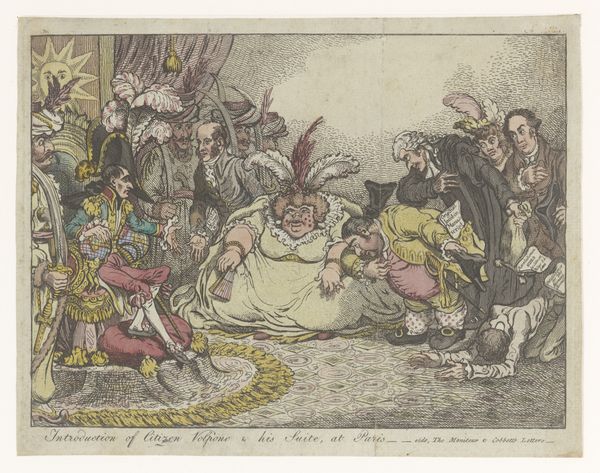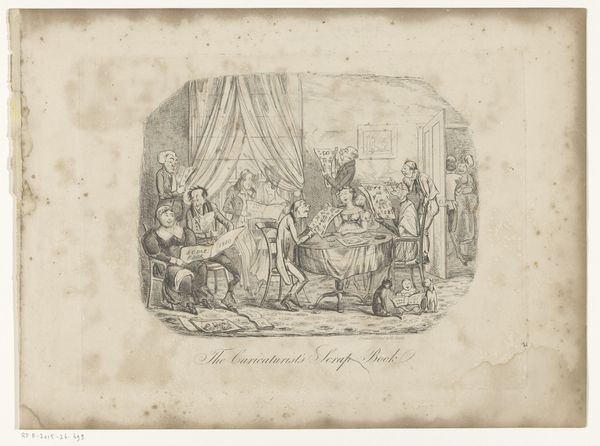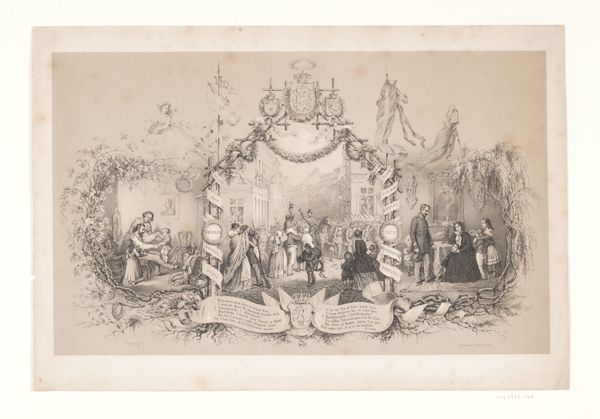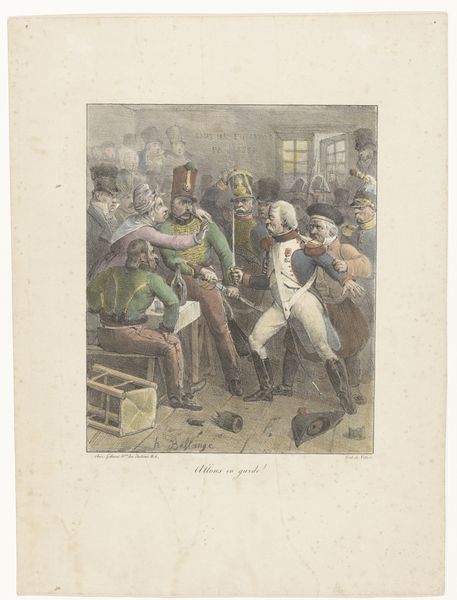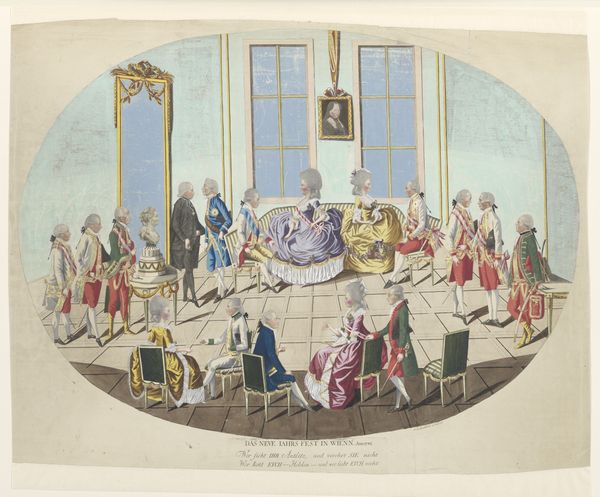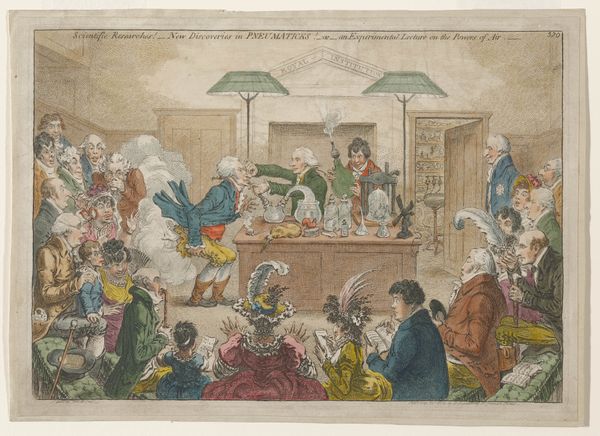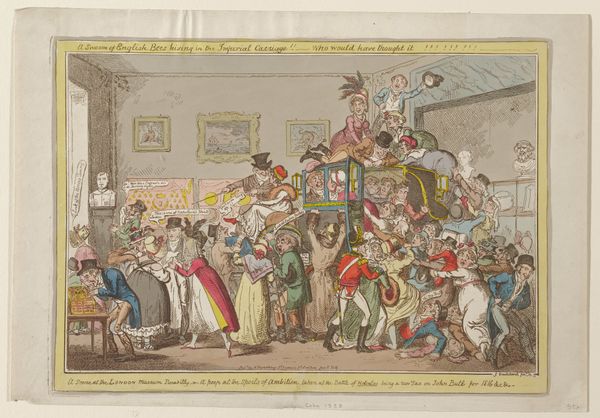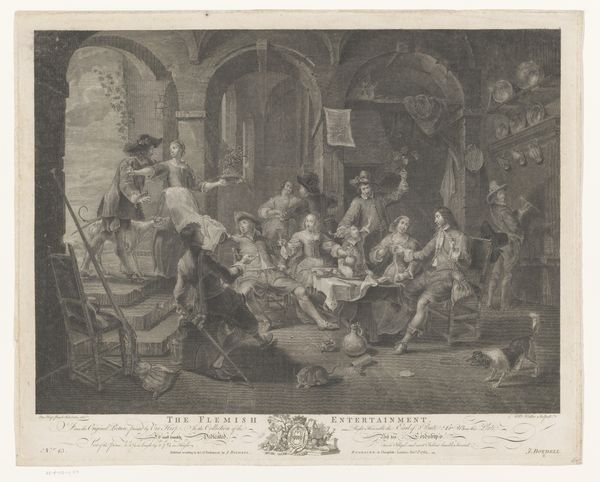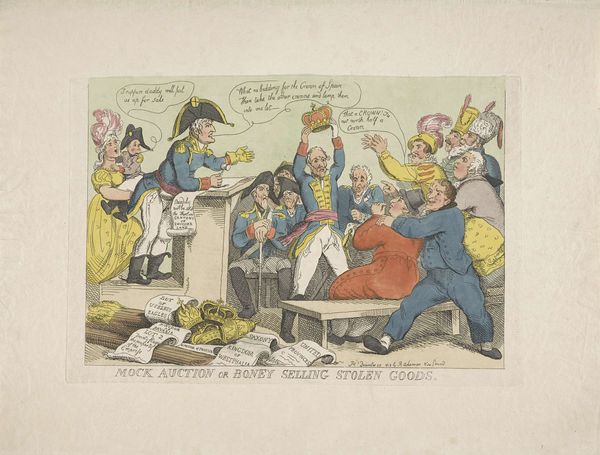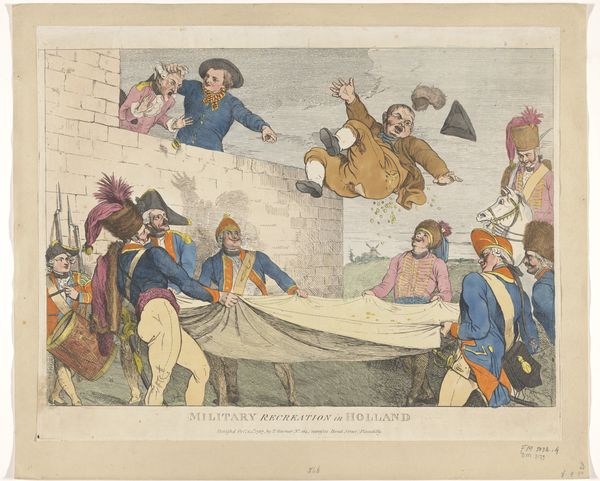
Spotprent op Louis Marie de la Révellière-Lépeaux, 1799 Possibly 1799
0:00
0:00
print, etching, pen
#
neoclacissism
# print
#
etching
#
caricature
#
romanticism
#
pen
#
history-painting
#
watercolor
Dimensions: height 255 mm, width 358 mm
Copyright: Rijks Museum: Open Domain
This satirical print, etched by James Gillray around 1799, unveils a scene teeming with political commentary through its rich symbolism. Dominating the space is the figure of Louis Marie de la Révellière-Lépeaux, a prominent figure of the French Directory. Note the crocodile suspended overhead. Historically, the crocodile has roots in ancient Egypt where it represented power and fear, often associated with the god Sobek. Here, it mocks Lépeaux’s rise and perhaps hints at a lurking danger or hypocrisy. The presence of Egyptian motifs—mummies, busts—further enriches the symbolic tapestry, reminiscent of Napoleon’s campaigns in Egypt. This allusion connects Lépeaux’s power to the exotic allure and perceived tyranny of ancient rulers. Consider the cyclical nature of symbols. The crocodile, once a symbol of divine might, now serves as a caricature of political overreach. Such shifts remind us that symbols are not static; they are continuously reinterpreted and re-contextualized throughout history, reflecting our ever-evolving cultural anxieties and collective memory.
Comments
No comments
Be the first to comment and join the conversation on the ultimate creative platform.


